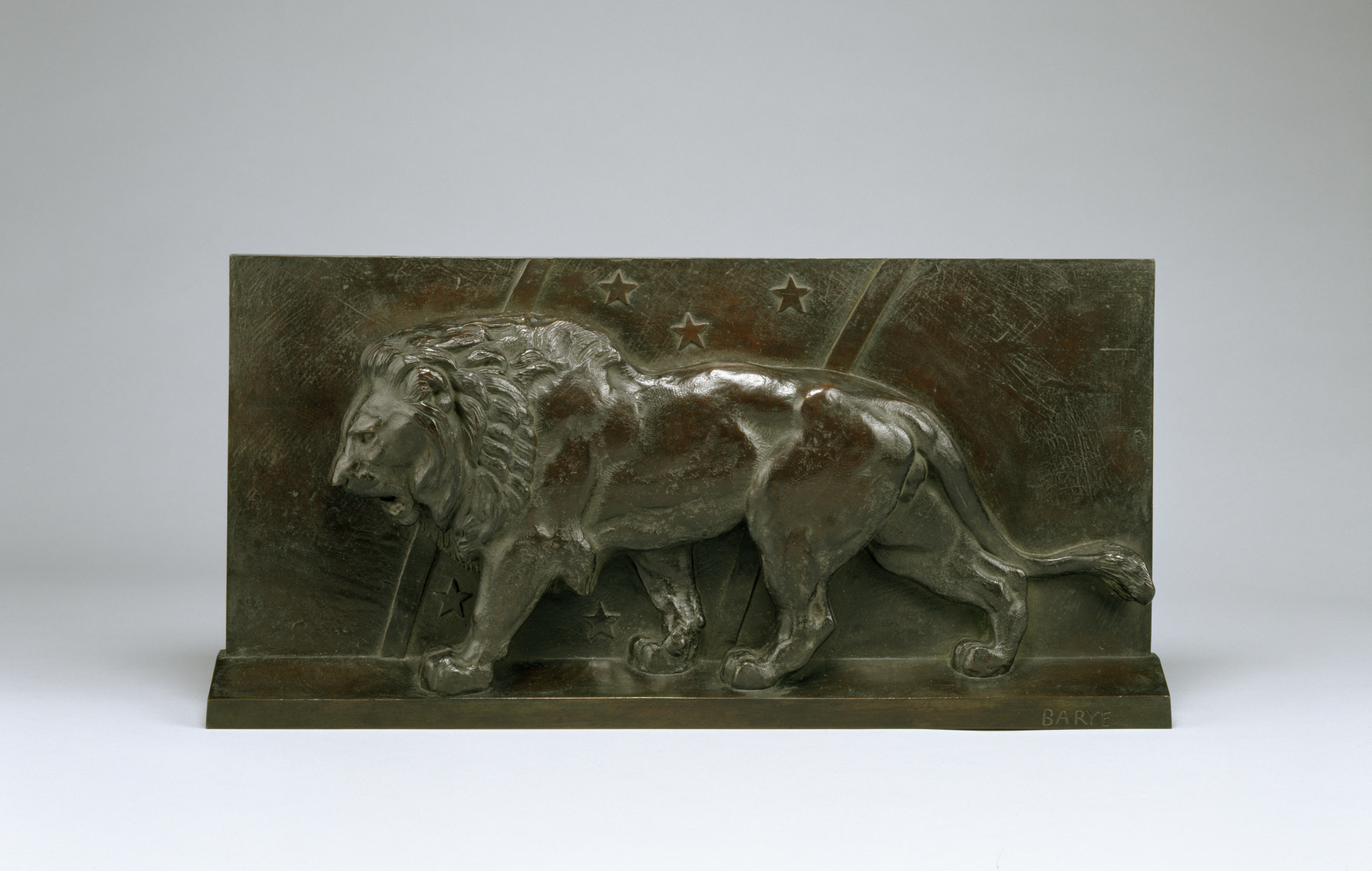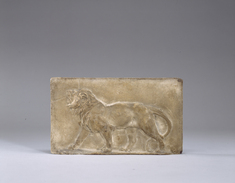Lion of the July Column
(18th and 19th Centuries )
A ferocious lion with a massive mane strides across a shallow ledge. The beast represents the astrological sign Leo; a band with stars behind it represents the sun's path through the houses of the zodiac. The design is adapted from a colossal relief on the pedestal of the July Column, which was unveiled in the Place de la Bastille in Paris in 1840. It commemorates the 504 citizens killed a decade earlier in the revolution that overthrew the Bourbon monarchy. The reference to Leo, the sign of the zodiac that governs late July, was particularly relevant to the Orléans monarchy, which came to power during the three-day revolution of July 27-29, 1830.
Inscription
Provenance
Provenance (from the French provenir, 'to come from/forth') is the chronology of the ownership, custody, or location of a historical object. Learn more about provenance at the Walters.
Ferdinand Barbedienne, Paris; William T. Walters, Baltimore, October 22, 1884, by purchase [George A. Lucas as agent]; Henry Walters, Baltimore, 1894, by inheritance; Walters Art Museum, 1931, by bequest.
Exhibitions
| 2007-2008 | Untamed: The Art of Antoine-Louis Barye. The Walters Art Museum, Baltimore; Philbrook Museum of Art, Tulsa; The Henry Morrison Flagler Museum, Palm Beach. |
| 1889-1890 | The Works of Antoine-Louis Barye. American Art Gallery (New York), New York. |
Geographies
France, Paris (Place of Origin)
Measurements
8 1/8 x 16 5/8 x 2 3/4 in. (20.6 x 42.2 x 7 cm)
Credit Line
Acquired by William T. Walters, 1884
Location in Museum
Not on view
Accession Number
In libraries, galleries, museums, and archives, an accession number is a unique identifier assigned to each object in the collection.
In libraries, galleries, museums, and archives, an accession number is a unique identifier assigned to each object in the collection.
27.165



